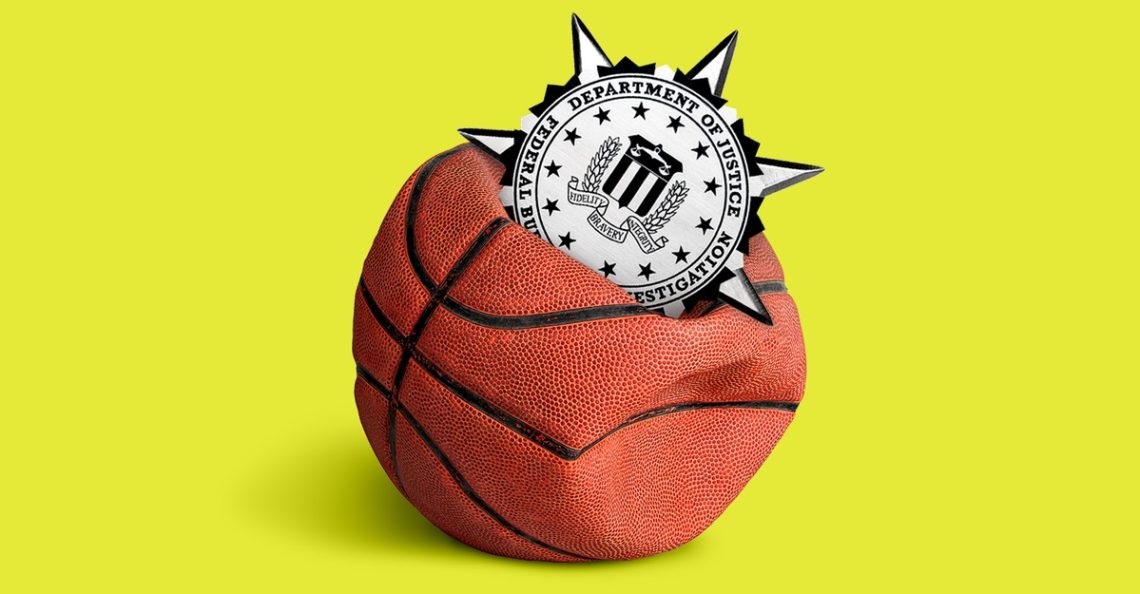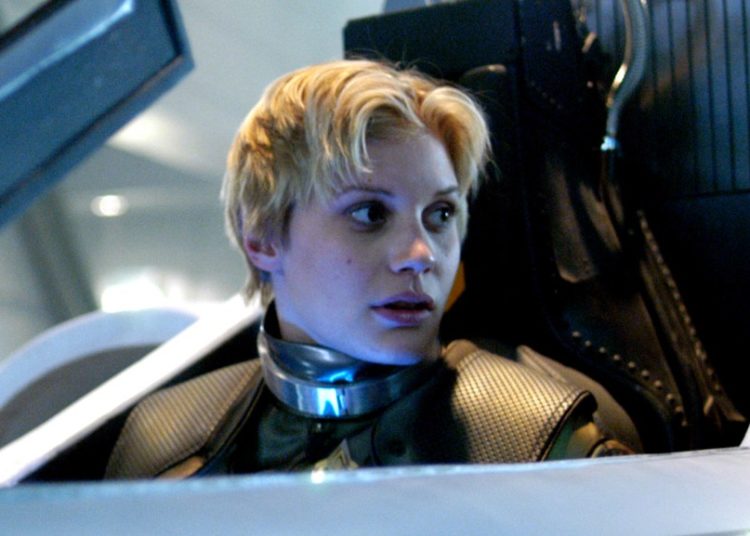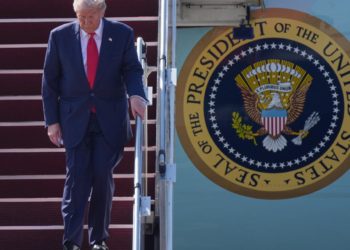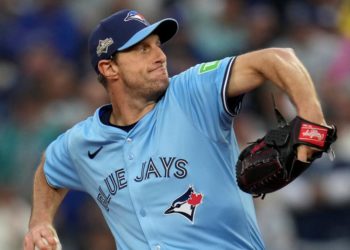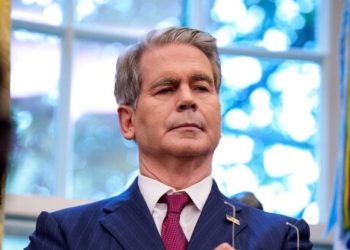The National Basketball Association is now slime-identified with a crew of upstanders known as “Spook,” “Peso,” “Vez,” “Sugar,” “Black Tony,” “Scruli,” and “Doc,” thanks to the strenuous efforts of FBI Director Kash Patel to generate a headline. “Current and Former National Basketball Association Players and Four Other Individuals Charged in Widespread Sports Betting and Money Laundering Conspiracy,” Patel’s press office blared last week. At a podium flanked by prosecutors as he announced arrests tied to the charges, Patel said, “The fraud is mind-boggling.” But read the actual indictments—which tell a different, much thinner story—and you might begin to suspect that the nation’s top cop was running a small con of his own.
Patel got his headlines. A front-pager in The New York Times led with “N.B.A.” in describing the arrests for ““Gambling Schemes,” as did an article in The Washington Post, which announced that NBA “figures” had been arrested in the probe into “a mob-run rigged poker scheme.” But the indictments are startling for their paucity compared with the charges described in Patel’s boasts. Out of the more than 30 people charged by federal prosecutors for illicit-gaming offenses, just three are associated with the NBA, and most of the evidence has nothing to do with basketball games. The most prominent arrest was of Chauncey Billups, the Portland Trail Blazers’ head coach, who is not directly accused of basketball-related wrongdoing, but rather of wire fraud and money laundering in allegedly acting as a celebrity front man in a crooked Las Vegas poker game in 2019. What Patel and prosecutors did not say is that at the time, Billups was not even employed by the league or any of its teams.
Insider sports gambling is a legitimate crisis for the NBA and should not be minimized. Another NBA figure indicted is the Miami Heat guard Terry Rozier, charged with involvement in a wagering scheme in which he supposedly faked a foot injury to underperform. Even that alleged offense is somewhat old news: The league investigated Rozier in 2023 after a sudden flurry of money on him rang alarm bells, but it cleared him when physicians said he showed a genuine foot inflammation. Rozier sat out the last several games of that season amid rumors of suspension, but the league said in a statement that his absence had nothing to do with gambling suspicions and was the result of the legitimate injury: “Any assertion that the NBA had anything to do with Terry Rozier not playing games following his departure from the game on March 23, 2023, is categorically false. Per team doctors, Rozier had a real foot injury confirmed with an MRI.” He has been under federal investigation ever since, and the league has cooperated. (After last week’s indictments, the NBA put Billups and Rozier on “immediate leave.”)
A third NBA indictee is the 49-year-old former player and coach Damon Jones, also alleged to have acted as a celebrity front and to have shared inside information with bettors to cash in on wagers. Jones has not been formally associated with the league since 2018 but is a former teammate and coach of the Los Angeles Lakers star LeBron James; they played together with the Cleveland Cavaliers and are said to remain close.
The rest of those charged seem to have zero connection to the league. They are low rollers and a handful of alleged mob-family middlemen with names such as “Lou Ap” and “The Wrestler,” accused of running a rigged poker ring that prosecutors say fleeced card players out of at least $7 million. That hardly ranks as the organized-crime bust of the century. A study by the American Gaming Association estimated that this year, illegal and unregulated gambling wagers will amount to more than $673 billion; of that, sports betting will account for about $84 billion.
It’s not unusual for prosecutors and cops to put high-profile indictments on display in the name of deterrence. But in this case, they came perilously close to a smear, positioning the NBA figures squarely alongside those from La Cosa Nostra: the Gambinos, Luccheses, Bonannos, and Genoveses. Patel also likened the NBA to Wall Street. “Let’s not, you know, mince words,” he said. “This is the insider-trading saga for the NBA.”
But where Patel and the prosecutors promise a lion, out pops a mouse. The contents of the indictments involving the NBA figures are surprisingly paltry: Billups is mentioned only a handful of times; he is alleged to have served as a “face card,” a celebrity player who enticed marks to a gaming table equipped with high-tech devices, such as X-ray card readers, to direct winning hands. The Department of Justice’s detention letter quotes suggestive texts that allegedly were sent between accused organizers and participants, including one mentioning Billups by name: “The one guy on the end acted like he wanted Chauncey to have his money! He was star struck!” Another appears to show a person claiming that participants in the game knew “all the signals.”
Billups’s attorney Chris Heywood denied the charges in a statement, calling his client, a five-time All-Star who won an NBA championship with the Detroit Pistons in 2004, “a man of integrity.” He continued: “To believe that Chauncey Billups did what the federal government is accusing him of is to believe that he would risk his hall-of-fame legacy, his reputation, and his freedom. He would not jeopardize those things for anything, let alone a card game.”
Rozier’s attorney Jim Trusty also issued a statement: “A long time ago we reached out to these prosecutors to tell them we should have an open line of communication. They characterized Terry as a subject, not a target.” He added: “Terry was cleared by the NBA and these prosecutors revived that non-case. Terry is not a gambler, but he is not afraid of a fight, and he looks forward to winning this fight.”
It will be interesting to see which charges stick. Some may. The indictment against Rozier reads like “gang that couldn’t shoot straight” stuff. It alleges that on March 23, 2023, when Rozier was playing for the Charlotte Hornets, he told another defendant that he would pull himself early from a game against the New Orleans Pelicans, allowing bettors down the chain to cash in on prop bets: wagers on whether he would meet certain statistical thresholds in points, rebounds, and other categories. Jones is similarly accused of trading on his friendships for information to tip off bettors. According to the indictment, Jones was aware that “Player 3,” clearly identifiable as LeBron James, had a sore ankle on February 9, 2023, and would likely not play against the Milwaukee Bucks; Jones is alleged to have written in a text message, “Get a big bet on Milwaukee tonight before the information is out!”
Some opinionators believe that the NBA had this coming. Since the Supreme Court struck down a federal ban on sports betting in 2018, the league has embroiled itself in a matrix of relationships with sports-betting operators, including its official partners DraftKings, FanDuel, and BetMGM. It even allows sports books inside some arenas. But it’s hardly the only league with these partnerships, or these problems, and doesn’t deserve a special taint of corruption. Both soccer and tennis have had match-fixing scandals. The National Football League and Major League Baseball have significant partnerships with sports books, and players have served suspensions for betting.
The NBA’s real problem is more long-term and amorphous: The outsize impact of a great player in a sport that puts just five men on the floor at a time means that performance manipulation is easier than in some other sports. That reality, combined with apps that offer ever more convenience and minutiae to bet on in real time, invites corruption. But this landscape can also criminalize innocent behavior.
Every gambler seeks inside information, and not all of it would be a federal crime to act on. Does someone have a timely bonus clause that will kick in if a certain threshold is reached? Whose masseuse has been fired? Who is feeling sore? What constitutes inside information is an especially problematic question in pro leagues with an infinitude of assistant trainers, private physios, and other towel bearers who can easily gossip over a sprained toe, innocently.
Then there is this: Many NBA players sit themselves out, or play limited minutes, to manage the physical toll of an 82-game season, with its repetitive pounding and extreme muscle loads. (The 2025 playoffs saw a spate of injuries, especially to Achilles tendons of high-profilers, including Damian Lillard, Jayson Tatum, and Tyrese Haliburton. Stephen Curry sat out some of the postseason with a hamstring strain.) Resting does not constitute “tanking,” doing less than one’s best. It’s a commonsense measure to try to conserve the physical resources of men who have only so many high-level seasons in them.
For Billups, one of the most serious elements in the indicting documents is something he was not actually charged with: Prosecutors suggest that as a head coach, he may have offered inside information that he intended to sit some of his typical starters for a game against the Chicago Bulls on March 24, 2023. This is where real trouble lurks for the league, in the indefinable area of what constitutes actionable inside info for bettors, and how quickly in this day and age they can get their money down.
According to the indictment, Billups mentioned to another defendant, Eric Earnest, that he would withhold his usual starters against the Bulls because the Trail Blazers had given up on the season and the team was hoping to increase its odds of getting “a better draft pick” in the forthcoming NBA draft. Earnest, the indictment states, then shared the info with another bettor, who in turn shared it with others, resulting in multiple bets being placed on the game, worth about $100,000. The Blazers lost, 124–96.
You can read that scenario as a tank and a fix. But the indictment does not allege that Billups played any role in the bets or profited from them. Everyone in the basketball world knew that the Trail Blazers were out of the playoff hunt, and that, with just 10 games remaining, they were likely to shut down their starters—not only for the sake of those players’ long-term health but also to foster younger players, and perhaps improve the team’s chances of drafting the phenom Victor Wembanyama.
In a statement about the indictments, a spokesperson for the National Basketball Players Association said, “The integrity of the game is paramount to NBA players, but so is the presumption of innocence, and both are hindered when player popularity is misused to gain attention.” It will get only harder for athletes to defend their innocence as gambling tech proliferates. In-game live betting now means that every second of minutiae can represent a bet—and a potentially questioned motive. Who will score next? Will it be a two pointer or a three? Players have faced vile fan reactions and even death threats for their failure to satisfy bettors in the moment. The majority of the NBA’s players have expressed unhappiness with this state of affairs, and with associations with sports books in general. A poll by The Athletic showed that only 34 percent of players believe gambling partnerships are good for the league.
The NBA indictments are small game compared with the bigger picture of a multibillion-dollar vice industry aided by new technology that can enhance twitching addictiveness, and enable cheating. But the league is not without ways to defend itself, or to cleanse its reputation. It has the sway to demand that its sports books eliminate prop bets. If FanDuels and DraftKings won’t agree, the NBA should simply withhold the data and statistics that they have been providing to sports books. The league should also continue to lobby lawmakers for a federal ban on prop bets, as a matter of the game’s health and that of its fan base. The NBA is being made an example of, unfairly. Its response should be to set an example.
*Illustration sources: Beata Zawrzel / NurPhoto / Getty; baiajaku / Getty; Cipariss / Getty.
The post This Is Not the NBA Crime of the Century appeared first on The Atlantic.
